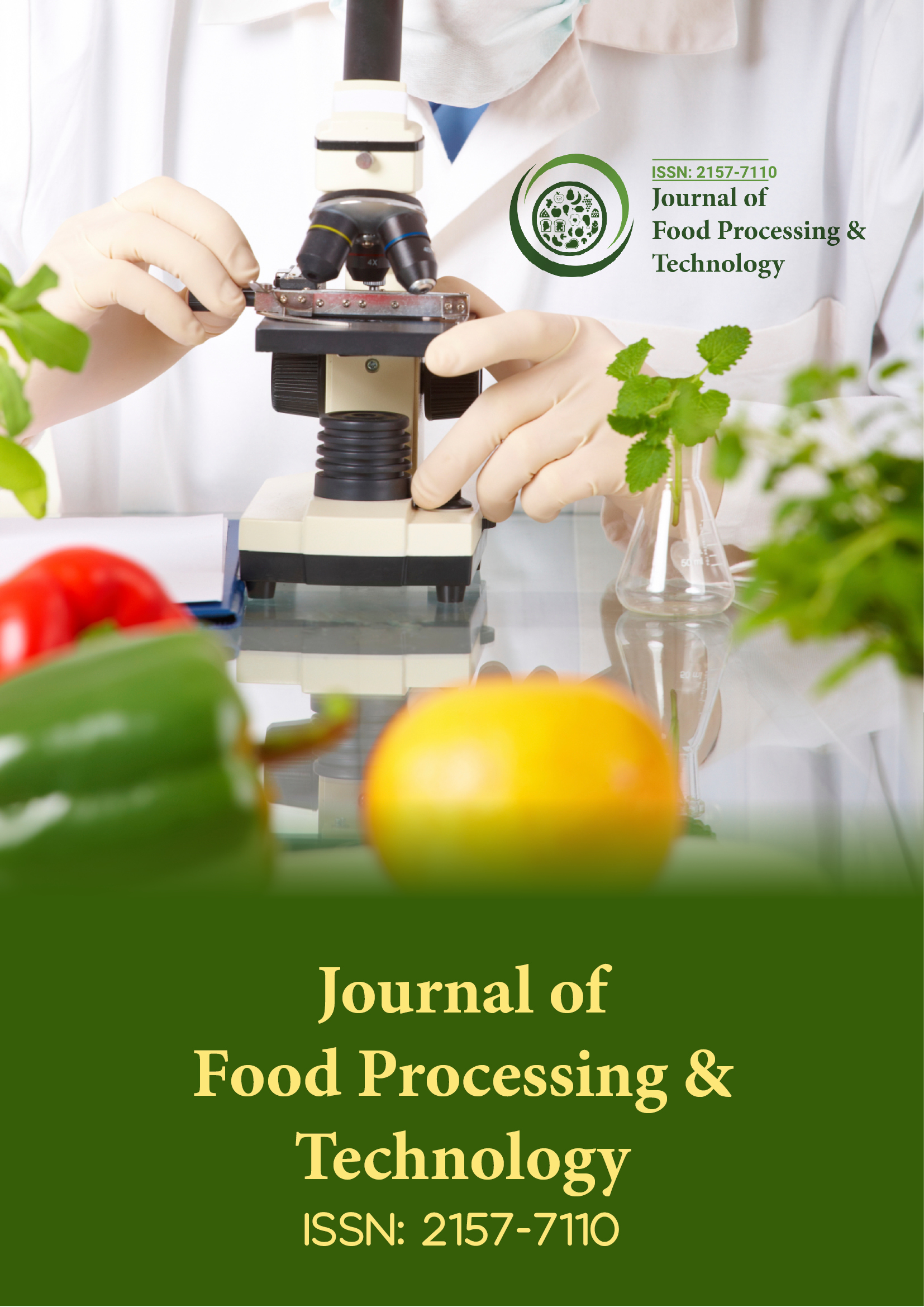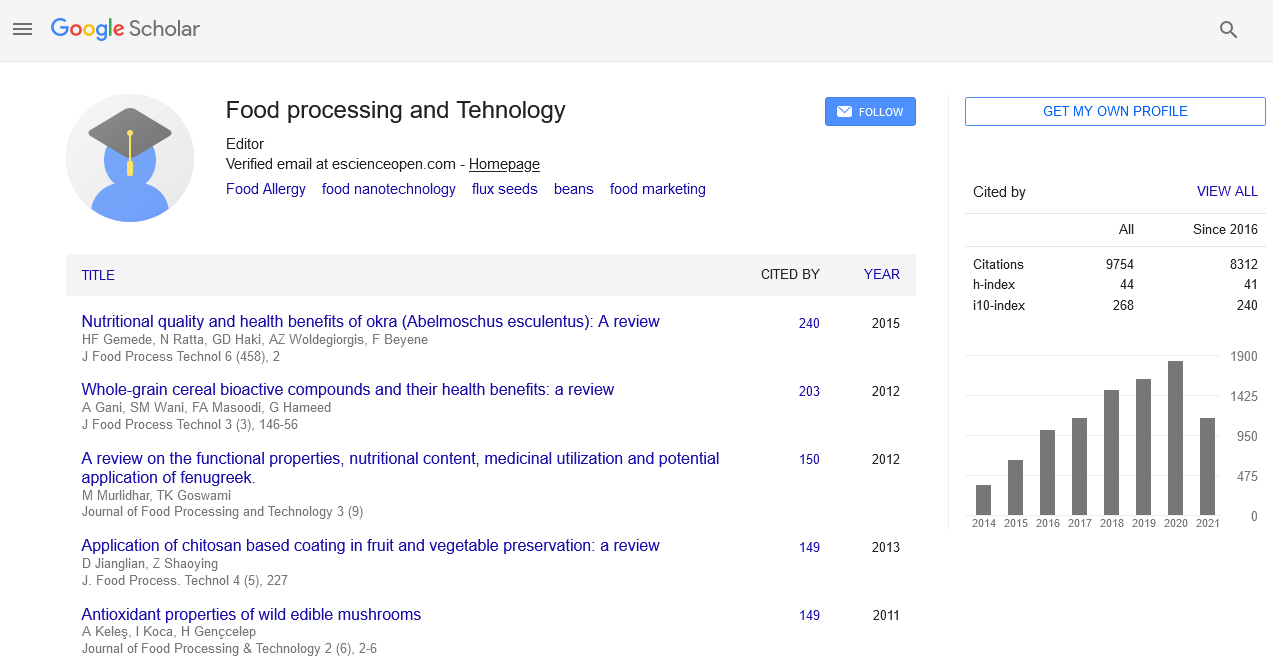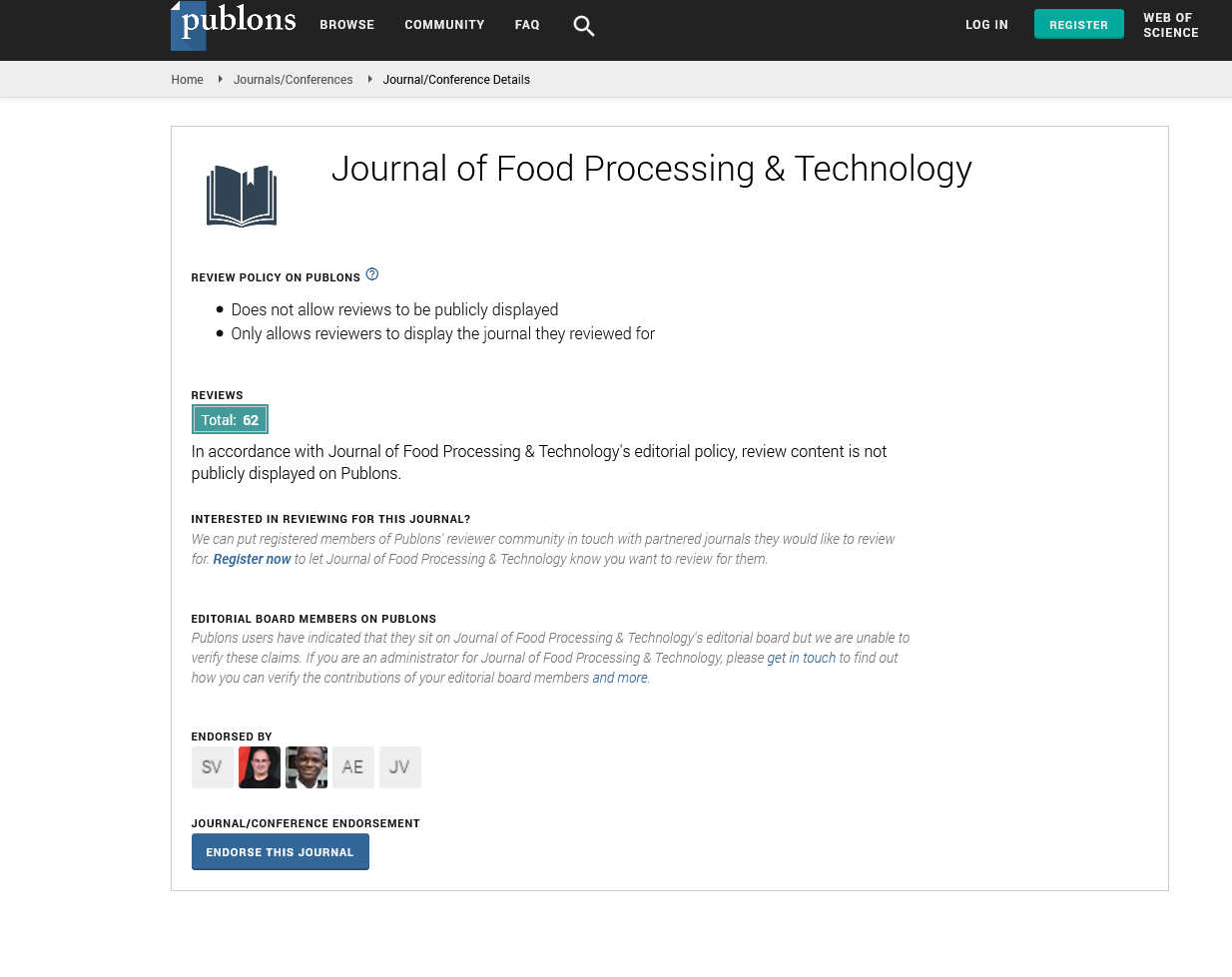Indexed In
- Genamics JournalSeek
- Academic Keys
- JournalTOCs
- China National Knowledge Infrastructure (CNKI)
- Access to Global Online Research in Agriculture (AGORA)
- Centre for Agriculture and Biosciences International (CABI)
- RefSeek
- Directory of Research Journal Indexing (DRJI)
- Hamdard University
- EBSCO A-Z
- OCLC- WorldCat
- Scholarsteer
- SWB online catalog
- Publons
- Euro Pub
- Google Scholar
Useful Links
Share This Page
Journal Flyer

Open Access Journals
- Agri and Aquaculture
- Biochemistry
- Bioinformatics & Systems Biology
- Business & Management
- Chemistry
- Clinical Sciences
- Engineering
- Food & Nutrition
- General Science
- Genetics & Molecular Biology
- Immunology & Microbiology
- Medical Sciences
- Neuroscience & Psychology
- Nursing & Health Care
- Pharmaceutical Sciences
Opinion Article - (2025) Volume 16, Issue 3
Role of High-Pressure Processing in Enhancing Juice Safety and Quality
Liam Anderson*Received: 26-May-2025, Manuscript No. JFPT-25-29656; Editor assigned: 28-May-2025, Pre QC No. JFPT-25-29656; Reviewed: 11-Jun-2025, QC No. JFPT-25-29656; Revised: 19-Jun-2025, Manuscript No. JFPT-25-29656; Published: 25-Jun-2025, DOI: 10.35248/2157-7110.25.16.1160
Description
Fruit and vegetable juices are highly perishable products due to their high water content, nutrient-rich composition, and favorable conditions for microbial growth. Microbial contamination and enzymatic activity can rapidly degrade quality, leading to spoilage, off-flavors, color changes, and potential safety hazards. Traditionally, thermal pasteurization has been the standard approach to ensure safety and extend shelf life. Heat treatments effectively inactivate many spoilage and pathogenic microorganisms, but they come at a cost. Elevated temperatures can significantly alter the sensory characteristics of juices, including flavor, aroma, and color. Moreover, heat-sensitive nutrients such as vitamin C, polyphenols, and certain antioxidants are often degraded during thermal processing, reducing the nutritional value of the final product. In response to these limitations, high-pressure processing (HPP) has emerged as a promising non-thermal alternative for juice preservation.
Unlike conventional pasteurization, HPP relies on extremely high hydrostatic pressures—typically in the range of 400 to 600 megapascals—to inactivate microorganisms without the need for heat. This technique allows for the preservation of juices with sensory and nutritional qualities much closer to those of freshly squeezed products. The mechanism of microbial inactivation under high pressure involves disruption of cellular membranes, denaturation of essential proteins, and interference with metabolic processes. Importantly, the process is effective against a wide range of pathogenic and spoilage microorganisms, including Escherichia coli, Salmonella spp., and Listeria monocytogenes, which are commonly associated with juice contamination.
One of the primary benefits of HPP is its ability to preserve heat-sensitive compounds. Vitamin C, for instance, is highly susceptible to degradation under thermal conditions, but high-pressure treatment can maintain its levels, ensuring that consumers receive juices with high antioxidant capacity. Similarly, polyphenolic compounds, carotenoids, and flavonoids retain their stability, contributing to both nutritional value and functional health benefits. Beyond nutritional retention, the process also preserves the natural flavor and aroma profiles of fruits and vegetables, which are often compromised by heat treatments. This has significant implications for consumer satisfaction, particularly in premium juice markets where fresh-like sensory attributes are highly valued. Color stability is another advantage of high-pressure processing. In juices such as carrot, beetroot, and pomegranate, natural pigments like carotenoids and anthocyanins are better preserved compared to conventional pasteurization. Maintaining the vibrant color of juices not only enhances visual appeal but also signals freshness and quality to consumers. This attribute has led to increased adoption of HPP in the production of cold-pressed and high-value fruit and vegetable beverages, where appearance plays a critical role in consumer perception and purchasing decisions.
From an industrial perspective, high-pressure processing requires specialized equipment capable of withstanding extreme pressures. While the initial investment is relatively high, the benefits often outweigh the costs. HPP extends shelf life significantly, sometimes up to three times that of unprocessed or thermally pasteurized juices, reducing waste and improving supply chain efficiency. Furthermore, the ability to deliver minimally processed products aligns with the growing consumer demand for natural, fresh-tasting, and additive-free beverages. Many juice manufacturers are increasingly leveraging HPP to differentiate their products in a competitive market, emphasizing quality, safety, and healthfulness. Ongoing research is aimed at optimizing the parameters of high-pressure processing to maximize efficacy and product quality. Studies focus on pressure intensity, hold time, temperature during processing, and interactions with packaging materials. Packaging plays a crucial role, as HPP is applied to sealed containers, allowing products to be processed post-packaging, thereby reducing the risk of recontamination. Researchers are also exploring synergistic strategies, combining HPP with natural antimicrobials such as essential oils, organic acids, or plant extracts, which may enhance microbial inactivation while further preserving sensory and nutritional attributes.
In conclusion, high-pressure processing represents a revolutionary approach to juice preservation that effectively balances microbial safety with the maintenance of sensory and nutritional qualities. By retaining natural flavors, colors, and bioactive compounds while inactivating pathogens, HPP meets the dual consumer demand for healthfulness and freshness. Its adoption is reshaping the juice industry, particularly in the premium and cold-pressed segments, and ongoing research and technological advancements promise to further enhance its efficiency and applications. With growing consumer awareness of food safety, nutrition, and minimally processed products, high-pressure processing is poised to play a central role in the future of fruit and vegetable juice production, offering an innovative, sustainable, and high-quality alternative to conventional thermal pasteurization.
Citation: Anderson L (2025). Role of High-Pressure Processing in Enhancing Juice Safety and Quality. J Food Process Technol.16: 1160.
Copyright: © 2025 Anderson L. This is an open access article distributed under the terms of the Creative Commons Attribution License, which permits unrestricted use, distribution and reproduction in any medium, provided the original author and source are credited.


